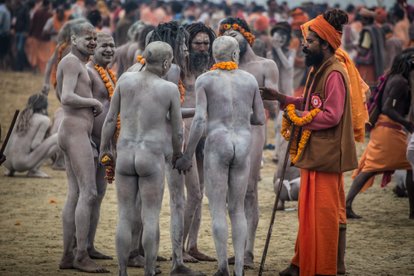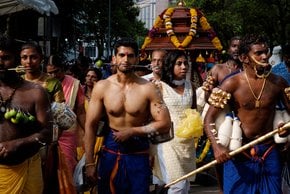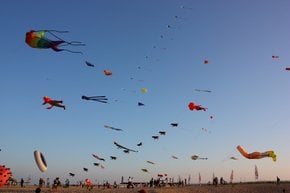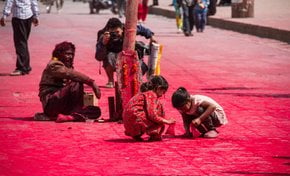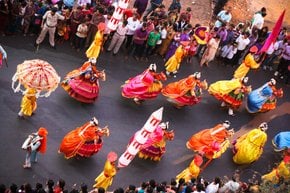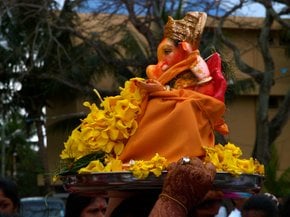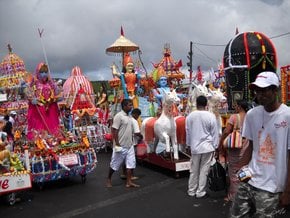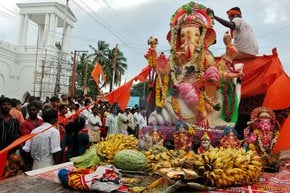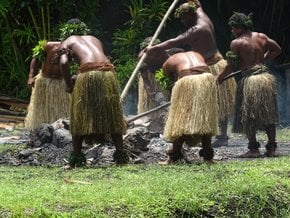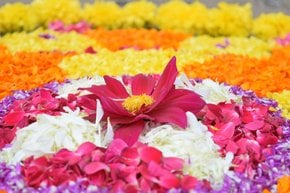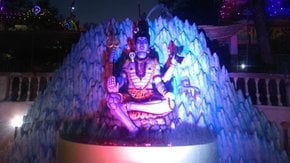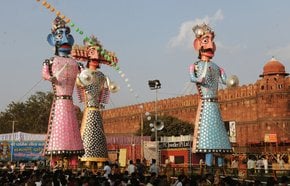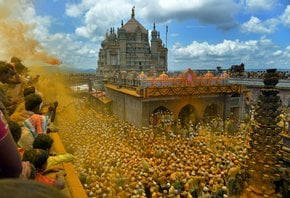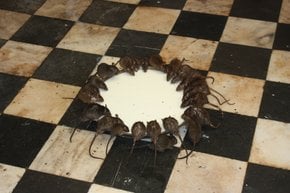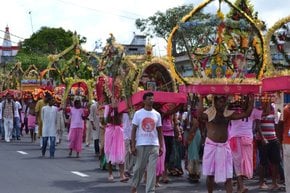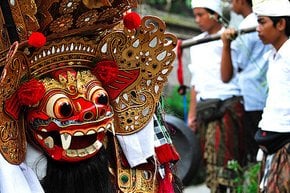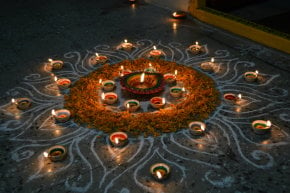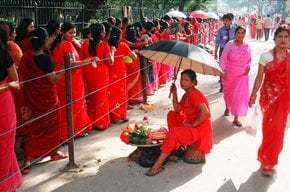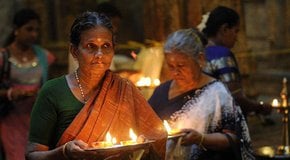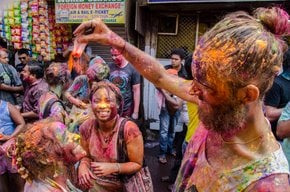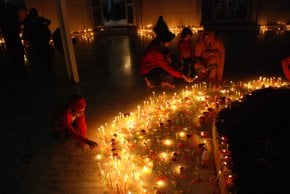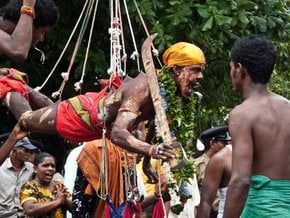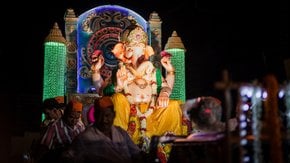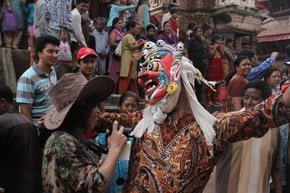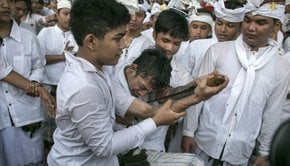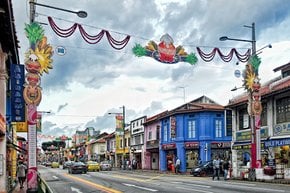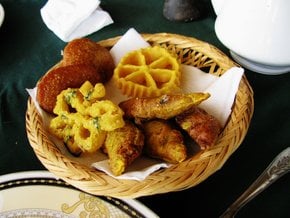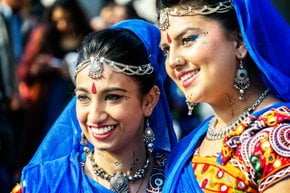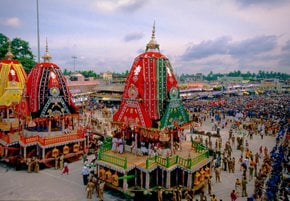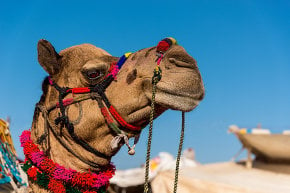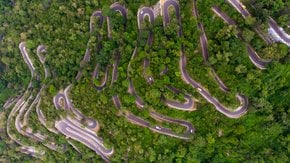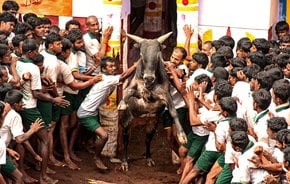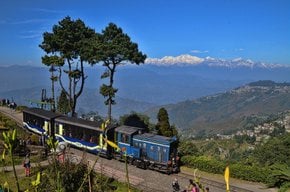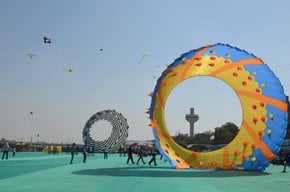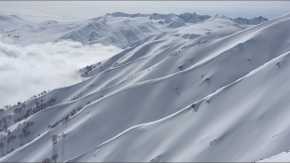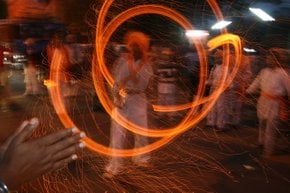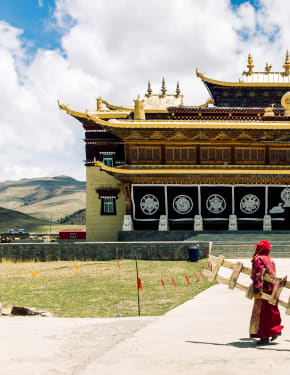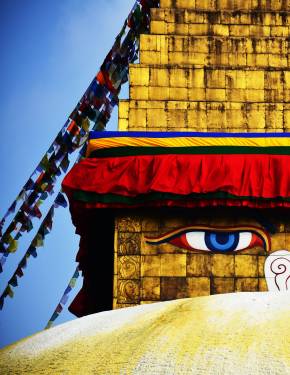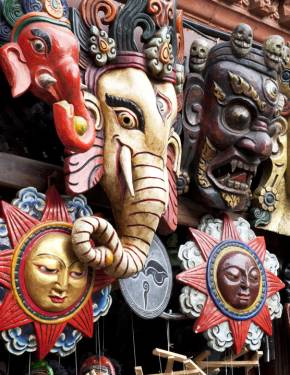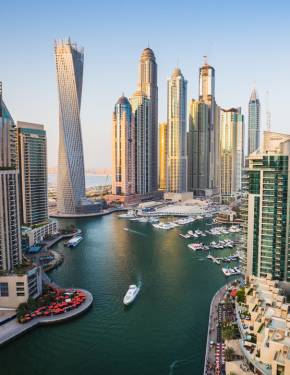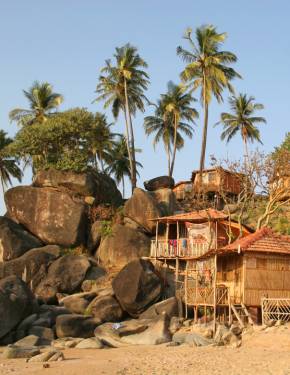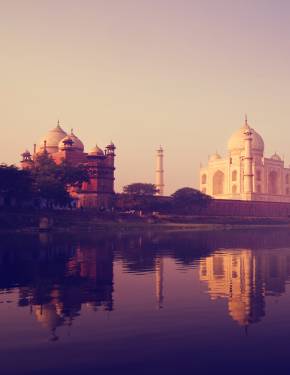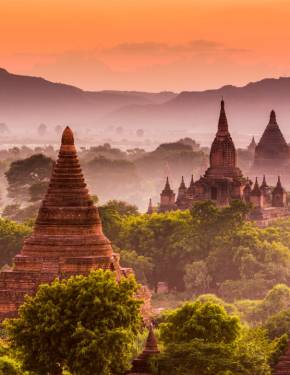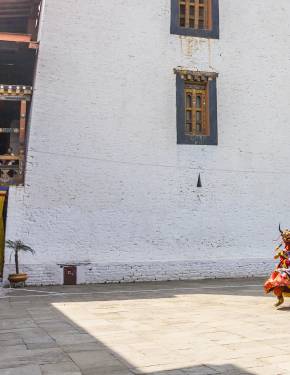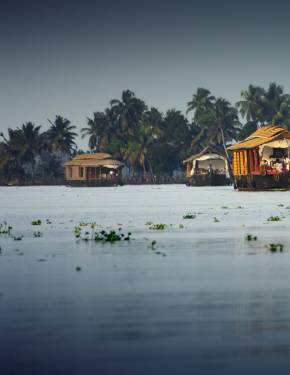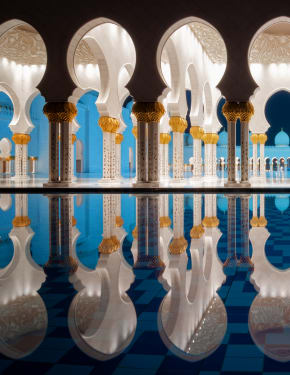Kumbh Mela 2025 à Inde
Plongez-vous dans l'un des plus grands rassemblements religieux de tous les temps.
Rendez-vous: 13 janvier–26 février 2025
Les Hindous savent mieux célébrer les festivals que n'importe qui dans le monde, surtout en tenant compte de l'enthousiasme et de la passion qu'ils ont pour cela. Parfois, ils expriment l'espérance et la joie et parfois apaisent les dieux dans l'espoir d'atteindre le salut. Accueillez donc le Kumbh Mela, un pèlerinage de foi hindou de masse dans lequel les hindous se réunissent pour se baigner dans une rivière sacrée pour laver leurs péchés
The Kumbh Mela follows a unique rotation system across four sacred river sites in India—Prayagraj, Haridwar, Ujjain, and Nashik—each hosting the festival once every 12 years. This rotation means that each location hosts the event in turn. The timing of the Mela is based on specific astrological alignments of the Sun, Moon, and Jupiter, which are believed to make the ritual bathing at these sites most spiritually powerful. Kumbh Mela includes special events such as Ardh Kumbh (half Kumbh) due to specific auspicious dates, and Simhastha Kumbh (unique to Ujjain), adding to the spiritual significance and cultural richness of these gatherings.
Ce festival se tient tous les trois ans, et passe entre quatre lieux différents : Allahabad ou Prayagraj (Triveni Sangam de Yamuna, Ganga et Saraswati), Nasik (rivière Godavari), Haridwar (rivière Ganga) et Ujjain (rivière Kshipra). La Mela, qui est le plus grand rassemblement de son genre dans le monde entier, attire des dévots de partout dans le monde et retourne à chaque endroit après une période de 12 ans.
«Kumbh« signifie nectar et histoire derrière la fête remontent à l'époque où les dieux ont décidé de résider sur la terre. Ils ont été affaiblis par la malédiction de Sage Durvasa, et les démons ont causé le chaos dans le monde. Le Seigneur Brahma les a recommandés d'écraser le nectar de l'immortalité. Quand les démons ont découvert le plan des dieux d'attribuer le nectar, ils les ont réaménagés pendant 12 jours. Pendant la poursuite, une partie du nectar est tombée aux quatre endroits susmentionnés. Les Hindous croient que les gens qui se baignent dans les eaux sacrées pendant le Kumbh Mela sont infiniment bénis. Tous leurs péchés sont lâchés, et ils se rapprochent un peu du salut.
The 2025 Maha Kumbh Mela in Prayagraj will follow a structured schedule with key bathing dates, beginning with Paush Purnima on January 13, which signals the start of Kalpvasa, a period of spiritual discipline and devotion for pilgrims. The next significant day is Makar Sankranti on January 14, when thousands gather for ritual bathing at the holy Triveni Sangam. Another major date, Mauni Amavasya, on January 29, is expected to draw the largest crowds for the Shahi Snan, or “Royal Bath,” which is the spiritual high point of the Kumbh Mela.
Additional notable days include Basant Panchami on February 3 and Maghi Purnima on February 12, where devotees continue to perform ritual immersions. The festival concludes with Maha Shivaratri on February 26, when pilgrims make their final dip in the sacred waters.
The roots of the Kumbh Mela lie deep within Hindu mythology. The legend of the festival dates back to the churning of the cosmic ocean by the gods and demons to obtain Amrita, the nectar of immortality. According to the tale, a fierce battle for the nectar ensued, during which a few drops spilled at four locations in India, namely Prayagraj, Haridwar, Ujjain, and Nashik. These sites became sacred, and every 12 years, the Kumbh Mela is held at each, rotating between these cities.
Historically, records of the Kumbh Mela date back to the Maurya and Gupta periods, with emperors like Akbar showing reverence for the gathering. During the British colonial era, the festival attracted attention for its vast scale and religious significance. Today, the Kumbh Mela, recognized by UNESCO as an intangible cultural heritage of humanity, symbolizes a blend of religious devotion, cultural unity, and historical resilience.
Le Kumbh Mela est tenu lorsque les eaux de ces rivières sacrées sont dites passer dans le nectar, et les dates exactes peuvent être calculées selon une combinaison de positions zodiaques du Soleil, la Lune, et Jupiter.
The city has seen significant infrastructural improvements over the years to manage the influx of millions of pilgrims. Temporary bridges, camps, sanitation facilities, medical stations, and information centers will be set up throughout the Mela grounds. Additionally, authorities implement strict crowd management and safety protocols to ensure a smooth experience for attendees.

